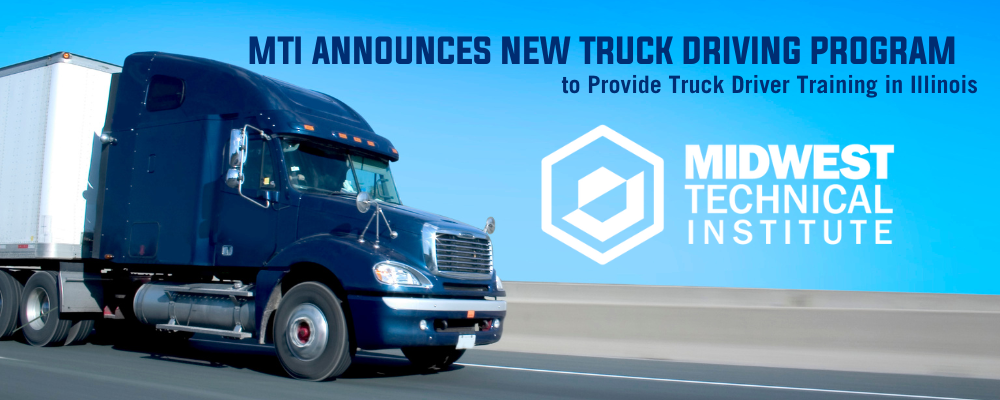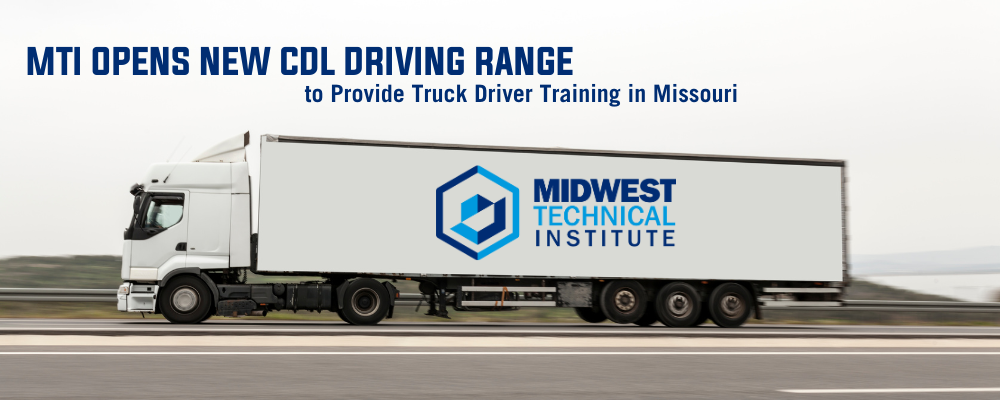If you’re interested in starting a new career as a truck driver, Midwest Technical Institute offers the necessary training to obtain your commercial driver’s license (CDL) after passing your state’s licensing exam. The MTI CDL Training Course is streamlined to help prepare you for passing the state licensing exam, to help you obtain a CDL, and to help you start driving a truck as quickly as possible.*
For the CDL Training Course, MTI offers both day and evening classes. The CDL Training Course is 20 days long and consists of 168 clock hours, broken down as follows:
- 40 hours of classroom training
- 16 range hours
- 16 over-the-road hours
- 96 hours of remedial training
For a deeper dive into the ins and outs of truck driving, you can enroll in the longer and more comprehensive Professional Truck Driving Program.* The Professional Truck Driving Program lasts 20 weeks and covers instruction on state CDL standards, driver safety, air brakes, combination vehicles, log books, trip planning, and public and employee relations. Graduates of the MTI Professional Truck Driving Program may be qualified for a long list of transportation-related careers, including truck driving.*
Both the 20-day CDL Training Course and the 20-week Professional Truck Driving Program prepare students to pass the state licensing exam and obtain their CDL Class A licenses.*
Types of Truck Driver Licenses
The type of license you need for a career in truck driving largely depends on the trucks you will be required to drive. MTI’s truck driver training will prepare you to earn a CDL Class A license. CDL Class A: The CDL Class A license legally allows you to operate any combination of vehicles totaling a gross weight of 26,001 lbs. or more, including class B and class C vehicles with proper endorsements. Class A vehicles include:
- Truck/trailer combinations
- Tractor-trailers
- Tankers
- Large flatbed trucks
- Commercial livestock carriers
CDL Class B: The CDL Class B license allows you to operate a single vehicle of up to 26,001 lbs. or a vehicle towing another vehicle weighing up to, but no more than, 10,000 lbs. Class B vehicles include:
- Straight trucks
- Large buses
- Segmented buses
- Box trucks, such as for delivery drivers
- Dump trucks with small trailers
CDL Class C: The CDL Class C license covers other large vehicles not included in class A or B, including:
- Vehicles transporting 16 or more people
- HAZMAT transport vehicles
- Small truck/trailer combos
Factors that Affect the Amount of CDL Training Needed
Beyond the time spent in the MTI CDL Training Course or Professional Truck Driving Program,* here are a few other things that may affect the amount of time it takes to get your CDL:
- Getting further endorsements: Depending on what jobs you wish to pursue, you may need to get endorsements in addition to your license. Vehicles for hazardous waste transportation, for instance, require a special endorsement. You’ll also need additional endorsements for fuel tankers or if you’ll be driving a large bus or people transport vehicle. You can find out more on endorsements for Illinois truck drivers here and for Missouri truck drivers here.
- Commercial learner’s permit (CLP): Before you can take the test for your CDL, you must first acquire your commercial learner’s permit and complete any necessary driving miles. Additionally, you must have your CLP for at least 14 days before applying for your actual license.
- State required driving miles: Every state requires a different amount of driving hours during your permit period. On average, you can expect 30 to 50 hours of mandatory driving time. You can check for your state’s requirements.
Interested in Learning More About Truck Driving?
Fill out the form below to receive info about our career training programs.
What to Expect After CDL Training
If you proceed through training and pass all licensing exams, here are a few things you can expect in the trucking industry:
- Salary: While no job or salary is ever a guarantee, the U.S. median annual wage for heavy truck and tractor-trailer drivers was $47,130 in May 2020.
- An industry that’s in high-demand: According to the Bureau of Labor Statistics, the trucking industry is expected to grow 2% from 2019 to 2029.
- Flexible/shifting schedules: While traditional hours are available, many routes and jobs have hours that can vary. Acquiring a CDL helps provide opportunity for those looking for variety in their work schedules.
- The chance to travel: Truck driving, by its very nature, is traveling. Drivers may have the opportunity to travel across the country or within the local area. Some shipping routes could also include international travel into Canada or Mexico.
If you like the idea of seeing the U.S. through the window of a truck cab, truck driving might be a great career path for you. Training for the CDL test is the first step. Contact the Midwest Technical Institute Admissions Team to begin your truck driving education today!



